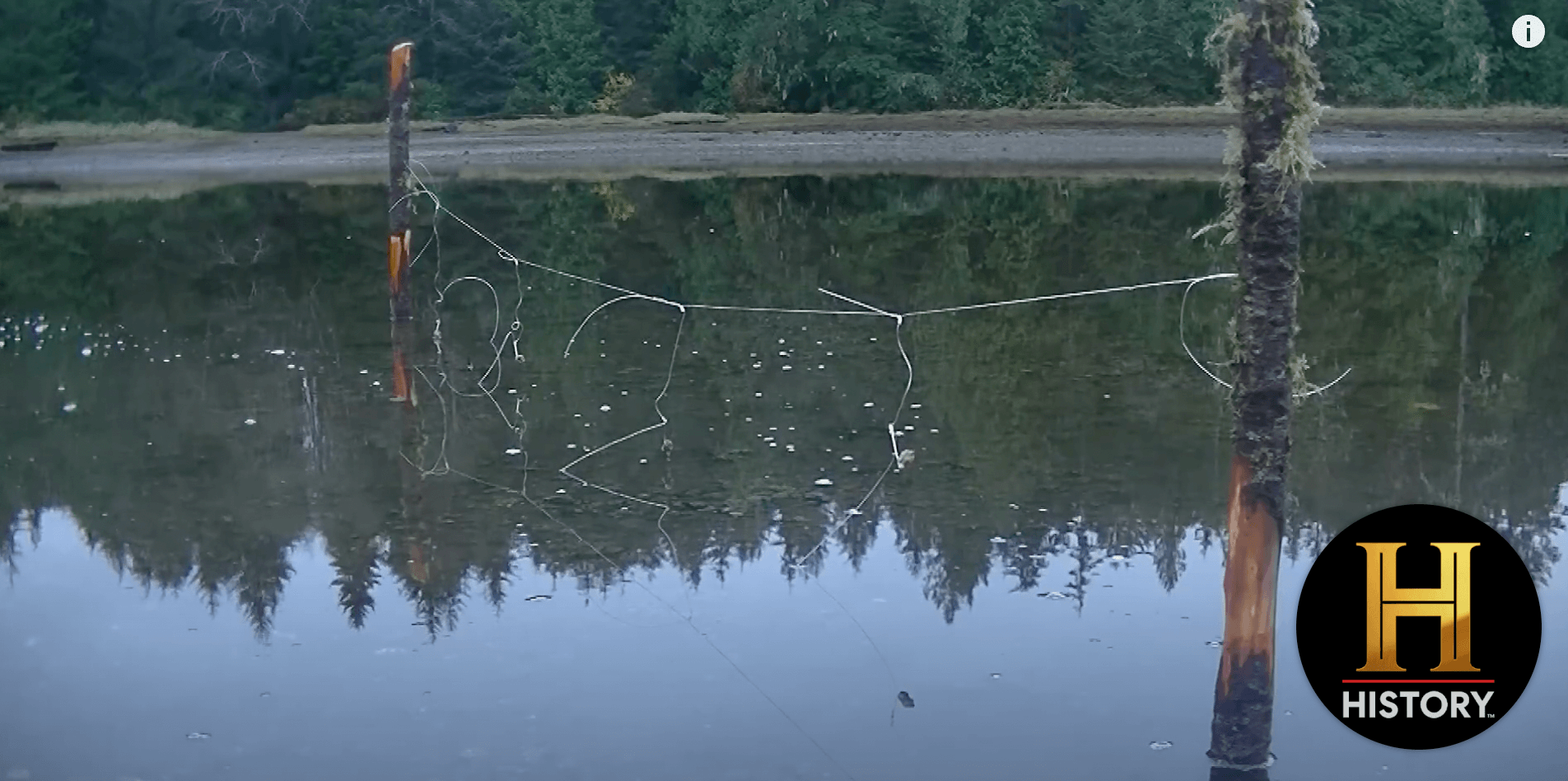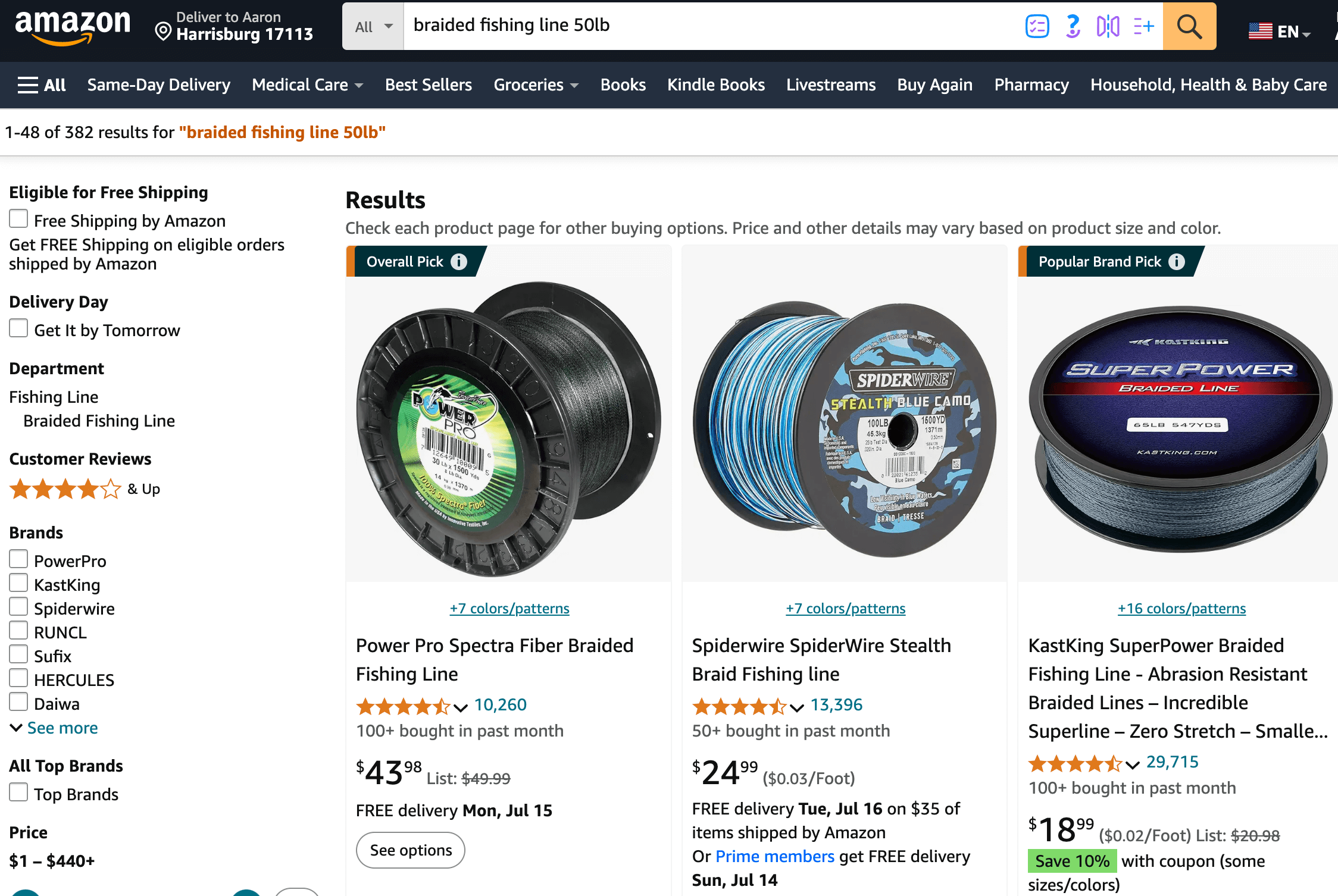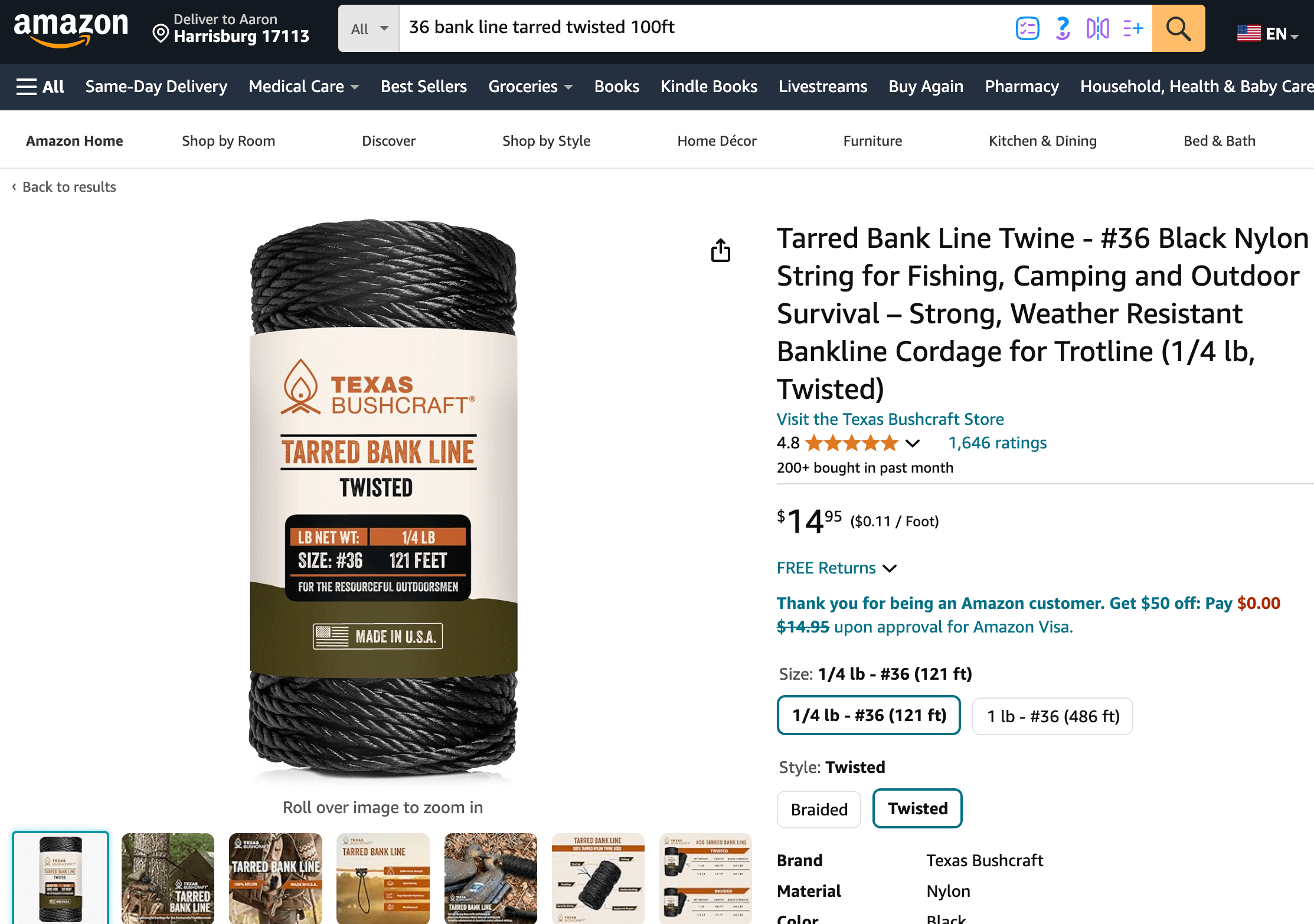Trotline Fishing Techniques and State Regulations 2024
This post is your one-stop shop for everything you need to know about trotline fishing in the US, from gear to catching catfish and crabs!

trotline by Mitch from history
Trotline 101
Imagine a clothesline stretched across the water, only instead of socks and boxers, you have baited hooks waiting for a whiskered surprise. That, my friend, is a trotline. Unlike those evil gillnets that trap every fish in their path, trotlines target specific spots, making them a more eco-friendly way to catch your dinner.
Why Trotline? It’s Easier Than Parallel Parking
Let’s face it, nobody enjoys spending hours untangling a mess of fishing line. Trotlines are as simple as it gets. All you need is a main line, some hooks, weights to hold everything in place, and special clips to attach your bait. Plus, unlike wrestling a fish from a boat, trotlines let you do your thing from the comfort of the shore - no seasickness guaranteed!
Here’s a breakdown of the most important things you’ll need:
Main Line: This is the backbone of your entire operation. Think of it as a super-strong clothesline that can handle a grumpy catfish pulling back. Braided nylon or tarred polypropylene are popular choices-they’re strong, won’t stretch too much, and can handle the elements.
There isn’t one single “best” line for trotlines, but some materials offer advantages depending on your needs. Here’s a breakdown of popular choices:
Braided Nylon: Very strong, abrasion-resistant, and handles big fish well. However, it can be hard on hands and cut bait if snagged. Brands like Power Pro and SpiderWire are popular.

Search braided fishing line on Amazon
Tarred Nylon (Mantila): Traditional choice, strong, and floats well. Can be stiffer and harder to work with than braid. Brands like Dacron are commonly used.
Monofilament: Affordable and easy to handle, but not as strong as braid or tarred nylon. Best for smaller fish. Brands like Berkley Trilene are common [Search Berkley Trilene on Amazon].
Trotline String: These are the little lines that hang off the main line and hold your baited hooks. You want something strong and weather resistant, but not so thick that it scares the fish away. Again, braided nylon is a good option.
Hooks: No surprises here-these are the fishy magnets that snag your dinner. Circle hooks are a good choice for trotlines because they catch fish securely without tearing open their mouths (catch and release, anyone?). As for size, look for something between a #4 and a #2/0, depending on what you’re targeting.
Trotline weights: Imagine a pizza floating sideways in the water - that’s not ideal for a trotline. Weights keep your line nice and taut, making it easier for fish to get hooked. Lead weights are common, but some people use bricks or even rocks in a pinch (just make sure they’re smooth and won’t snag on anything).
Trotline clips: These little guys attach your trotline line with the hook to the main line. They should be strong enough to hold a decent fish and swivel to keep your line from twisting. Look for stainless steel clips - they’ll resist rust and last longer.
Catfish King or Crab Catcher?
Trotlines are like Swiss Army knives - they can catch anything! But catfish are the real rock stars here. Their whiskered faces just can’t resist a tasty snack dangling in the water. Setting up a trotline for catfish is pretty straightforward. Just make sure you choose the right spot (think catfish condos - shady areas near rocks or logs) and use baits they love, like smelly nightcrawlers or cut-up baitfish.
Trotlines aren’t just for catfish enthusiasts. Crabs are another delicious target, especially those blue crab monsters. The setup is similar to catfish, but you may want to adjust your bait - a juicy piece of fish or some chicken necks should do the trick.
State Lines and Trotline Fines
Before you trot off like a maniac, remember - trotline fishing rules can vary depending on where you live. So don’t be the guy who gets fined for accidentally catching an endangered goldfish (pretty sure they’re not in the lakes, but hey, stranger things have happened). Take a quick look at the table below, might find what you need. Or, a quick web search for “trotline fishing regulations in [your state]” should set you straight.
| State | Trotline Regulations | Source |
|---|---|---|
| Alabama | Trotlines lawful for taking non-game fish and catfish except in certain waters (check specific regulations). Must be attended at least once every 24 hours. | Outdoor Alabama |
| Alaska | Generally prohibited. Exceptions may exist for specific areas or fisheries with a permit. |
Alaska Gov |
| Arizona | Generally prohibited in most waters. |
Arizona Gov |
| Arkansas | Lawful for taking catfish and non-game fish in most areas. Specific regulations on length, hook spacing, and attendance requirements may apply. | Game & Fish Commission |
| California | Generally not allowed due to unattended fishing gear restrictions. |
Wildlife CA |
| Colorado | Generally prohibited. Exceptions may exist for specific waters with a permit. |
Colorado Fishing |
| Connecticut | Generally prohibited. |
Fishing Regulation |
| Delaware | Generally prohibited in tidal waters. May be lawful in some non-tidal waters with a permit. |
Fisheries Section |
| Florida | Lawful for taking catfish and non-game fish in most areas. Specific regulations on length, hook spacing, and attendance requirements may apply. | FWC |
| Georgia | Lawful for taking catfish and non-game fish in most areas. Specific regulations on length, hook spacing, and attendance requirements may apply. | Department of NRD |
| Hawaii | Generally prohibited. |
Hawaii Gov |
| Idaho | Generally prohibited. Exceptions may exist for specific waters with a permit. |
Season and Rule |
| Illinois | Lawful for taking catfish and non-game fish in most areas. Specific regulations on length, hook spacing, and attendance requirements may apply. | 2024 Regulation |
| Indiana | Lawful for taking catfish and non-game fish on some waters. Specific regulations on size, location, and attendance requirements may apply. | Official Fishing Guide |
| Iowa | Lawful for taking catfish and non-game fish in most areas. Specific regulations on length, hook spacing, and attendance requirements may apply. | Iowa DNR |
| Kansas | Lawful for taking catfish and non-game fish in most areas. Specific regulations on length, hook spacing, and attendance requirements may apply. | Fishing Regulation |
| Kentucky | Lawful for taking catfish and non-game fish in most areas. Specific regulations on length, hook spacing, and attendance requirements may apply. | KY Gov |
| Louisiana | Lawful for taking catfish and crabs in most areas. Specific regulations on length, hook spacing, and attendance requirements may apply. | Louisiana Gov |
| Maine | Generally prohibited. |
Maine Gov |
| Maryland | Lawful for taking crabs with specific regulations on line length and commercial vs recreational use. Not allowed for finfish. | Maryland Gov |
| Massachusetts | Generally prohibited. |
Mass Gov |
| Michigan | Lawful for taking catfish and non-game fish in some inland lakes with a permit. Generally prohibited in rivers and streams. | Michigan Gov |
Other sources
Mitch Sets Up Trotlines (History Alone, Season 1, Episode 8)
Zach talking about all kinds of passive lines he had in the water including trotline (History Alone, Season 3). This one is very interestring.
The Verdict: Trotline Time!
Okay, so maybe a trotline won’t win you any points on Bear Grylls’ show, but in a pinch, you might be able to use it to catch some food. Just remember, this is a last resort - leave the wilderness exploration to the professionals.
Trotline fishing is a fun, easy way to catch some tasty catfish or feisty crabs. It’s perfect for beginners and anyone who wants to spend less time untangling lines and more time bragging about their epic catches. So grab your gear, find a good spot, and get ready to troll like a champ!

